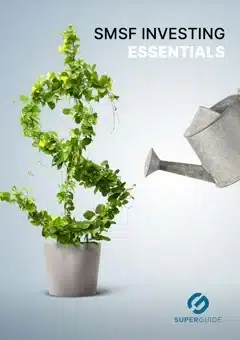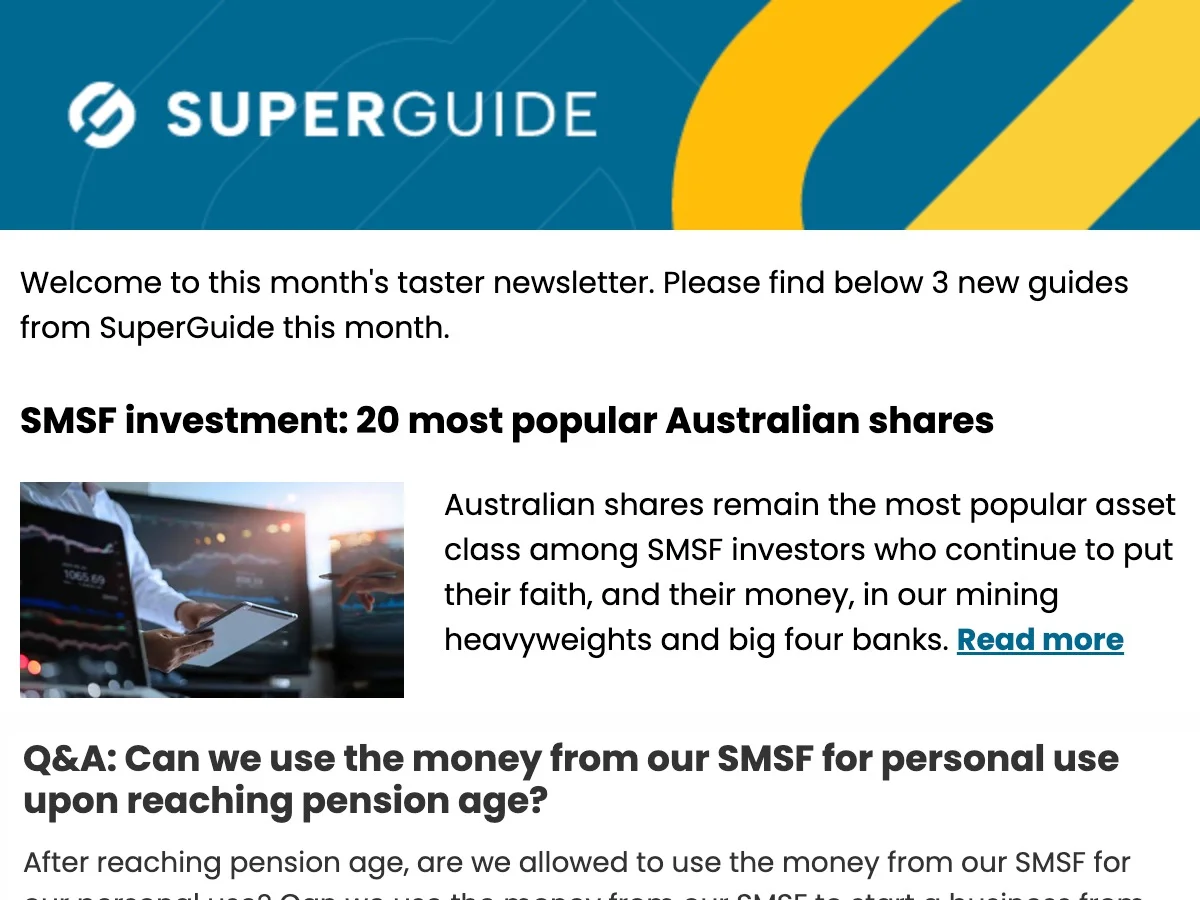In this guide
The number of self-managed super funds (SMSFs) using exchange traded funds (ETFs) has increased exponentially over the last decade from 27,000 to 145,000, according to the Vanguard/Investment Trends 2020 SMSF Report.
Even so, SMSF take-up and exposure to ETFs remains relatively low. Only 10% of SMSFs currently invest in these instruments, representing just 3.9% of their assets, according to data from SMSF administrators SuperConcepts.
How are SMSFs using ETFs?
SMSF investors are predominantly using ETFs to deliver exposure to foreign indices.
Outside overseas markets, SMSFs are using ETFs to invest in property securities, the health sector, gold and, to a lesser extent, the broader Australian market.
“SMSFs use them for diversification and accessing markets that are hard to reach or about which it’s hard for retail investors to develop an intimate knowledge,” says Graeme Colley, executive manager, SMSF technical and private wealth at SuperConcepts.
“The most popular ETFs among SMSFs were global equities, Aussie equities and then infrastructure. This has remained consistent over the last two years. For those intending to invest in the next 12 months, it’s global equities, Aussie equities and then sector specific,” Colley says.

Free eBook
SMSF investing essentials
Learn the essential facts about the SMSF investment rules, how to create an investment strategy (including templates) and how to give your strategy a healthcheck.
"*" indicates required fields
Popular ETF strategies
SMSF specialist Drew Meredith, a financial adviser with private wealth firm Wattle Partners, says in his experience SMSF trustees use ETFs in one of three ways.
1. To achieve core, low-cost exposure to share and bond markets
“Passive ETFs still attract the majority of capital flows in Australia and around the world and offer investors straightforward tracking of an index like the ASX 200 or S&P 500. Some people use an ASX 200 index-tracking ETF as their core exposure to Australian equities and add direct shares to their portfolio.
“Investors with smaller amounts to invest have also tended to use passive, index ETFs as they provide diverse exposure at a very low cost in a single transaction,” says Meredith.
2. As portfolio tilts to themes, sectors and countries
“This is the fastest-growing area of the ETF market in Australia. Despite it becoming easier to trade global stocks from Australia, issues like currency risk and tax reporting still exist.
“There has been an influx of ETFs in Australia in the last 12 months focusing on individual sectors like battery technology, cyber security or oil and gas. There has also been a number of country-specific ETF launches, allowing investors to buy a single ETF that provides exposure to places like India, Japan or the US,” he says, explaining these investors seek to plug gaps in their portfolio or invest in sectors they expect to perform better than the market as a whole in coming years.
3. As a hedge against volatility
Meredith says one of the longest-standing ETFs in Australia provides exposure to gold bullion, a traditional safe haven when financial markets tank or become volatile.
“ETFs are also emerging that allow investors to take a view on other commodities, along with instruments that invest in government and bank-issued bonds.
“Additionally, bear-themed funds that track share market volatility, or whose values rise when markets fall via the use of options, are also becoming popular.
Manage your SMSF smarter – for free

Access practical, independent guides and checklists to help you run your fund with confidence with a free SuperGuide account.
Find out more“Financial advisers and fintech applications are among the biggest users of index-tracking ETFs, which they tend to use as their core equity exposures, to keep costs low for their clients,” says Meredith.
He says many retail investors’ use of ETFs isn’t particularly sophisticated or organised because they don’t have an overriding investment strategy. “The result can be a somewhat disjointed portfolio with investments chosen based on their views at the time and some core index ETFs.”
But, with technology platforms now giving investors the ability to see how others use ETFs and build model portfolios, Meredith expects SMSF investors to become more sophisticated in the way they use ETFs to invest over time.
Using ETFs to address portfolio risks
It’s surprising SMSF trustees are not more enamoured with ETFs given their benefits; especially their low cost. One reason for the low take-up could be because most don’t offer the fully franked dividends prized by Australian investors. Another is due to lack of awareness.
The Vanguard/Investment Trends 2020 SMSF Report indicates barriers to investing in ETFs for trustees include a lack of knowledge about how to use ETFs in a portfolio. The trustees interviewed for the research said more ETF education materials and better research would prompt them to invest.
Peter Burgess, deputy CEO and director of policy and education at the Self-managed Super Fund Association of Australia, notes ETFs can help trustees address common problems SMSFs face.
For instance, in 2019 the ATO sent a letter to more than 17,000 SMSF trustees who had 90% or more of their fund’s assets invested in a single asset or asset class. The purpose of the letter was to remind SMSF trustees of their legal obligation to properly consider the risks associated with inadequate investment diversification.
This letter was followed up with new investment strategy guidelines published on the ATO website in February last year, which also focused on the need for trustees to properly consider investment diversification.
Supercharge your SMSF

"*" indicates required fields
“Off the back of increased ATO scrutiny, SMSF auditors are now scrutinising SMSF investment strategies like never before. So investment vehicles that enable SMSF investors to diversify in a cost-effective and efficient manner are likely to play a bigger role in the SMSF sector in the future,” says Burgess.
Future ETF trends
One of the main lessons of 2020 and the COVID-linked market turmoil was the importance of diversification.
The use of ETFs to easily and cheaply plug gaps in a portfolio or take sector tilts helped fuel a 47% increase in the Australian ETF market to a record $96.8 billion in the year to January 2021. According to ETF provider BetaShares there are now 256 locally listed ETFs, with international shares and Australian shares the most popular.
As for the future, a growing area of interest is active ETFs, especially over actively managed global or domestic equity strategies.
While only a few are currently available, expect the number and variety of active ETFs to expand in the years ahead.

Leave a Reply
You must be logged in to post a comment.